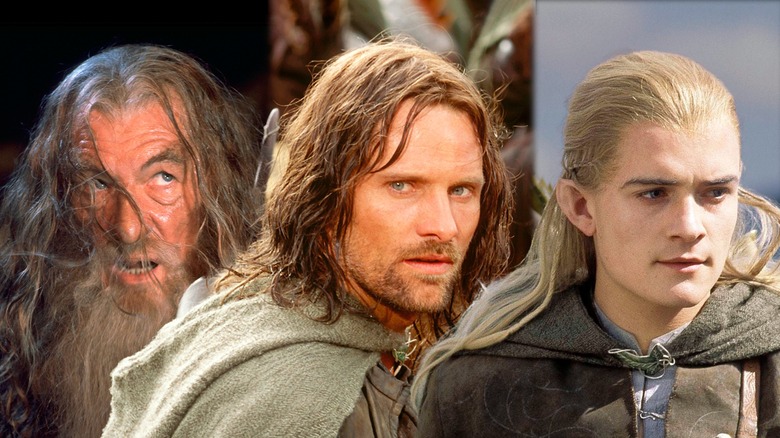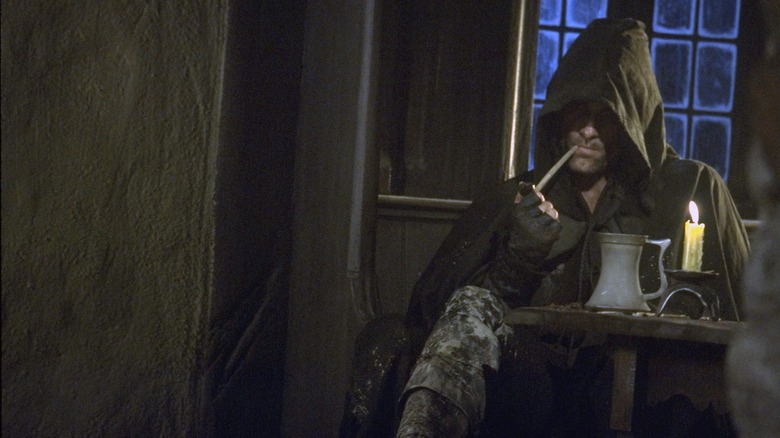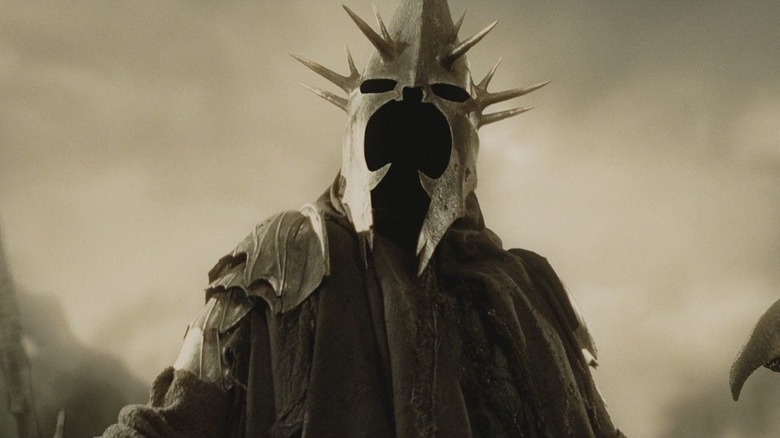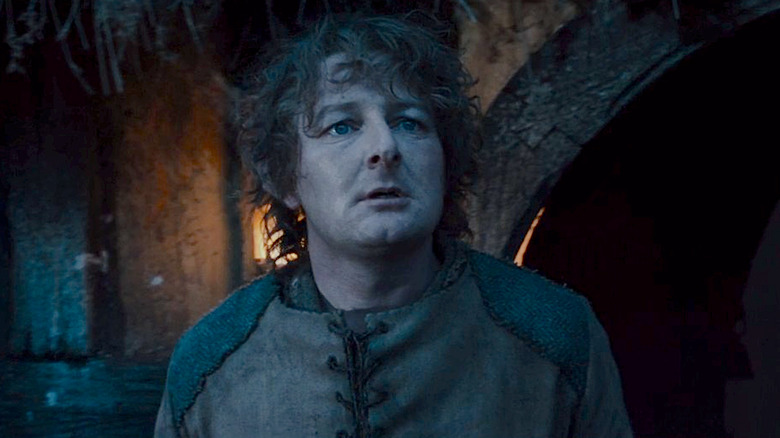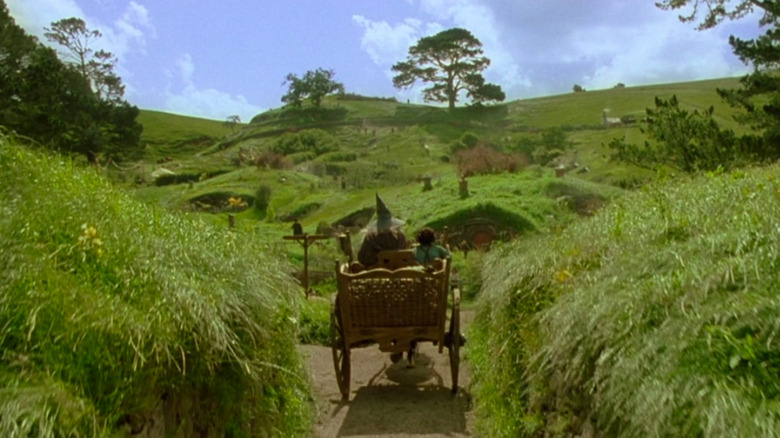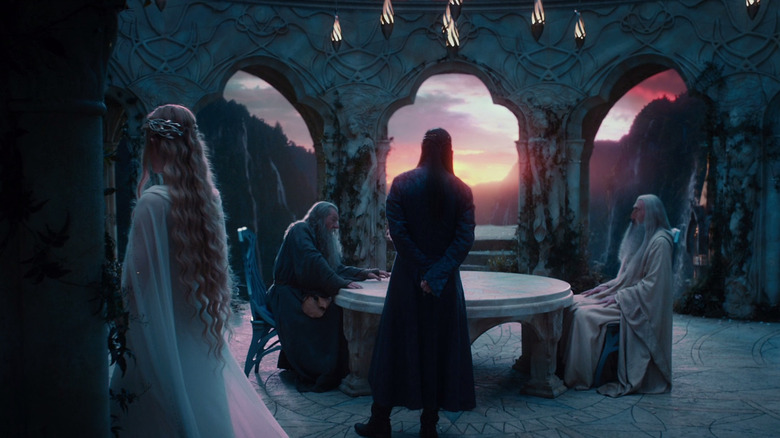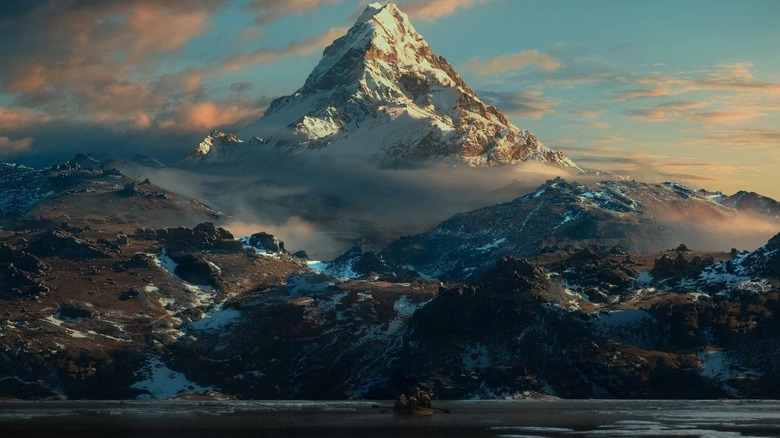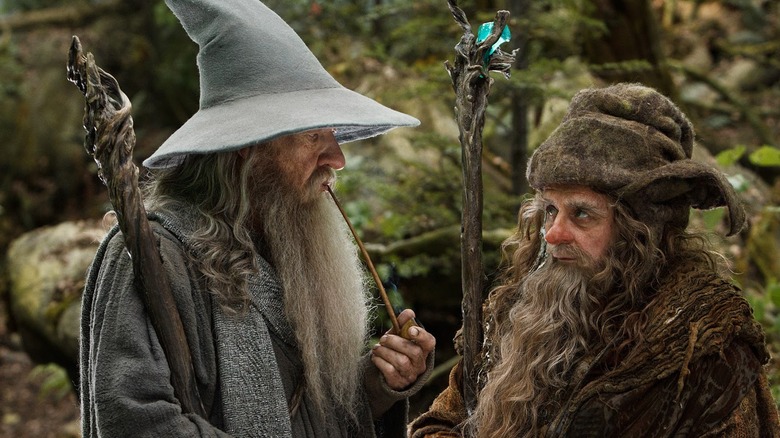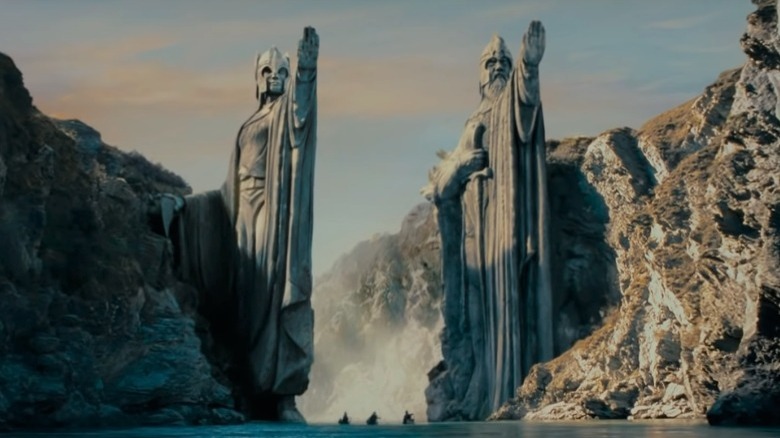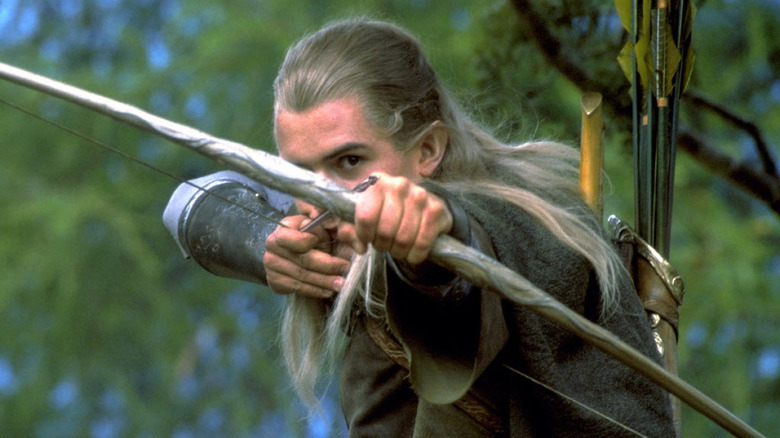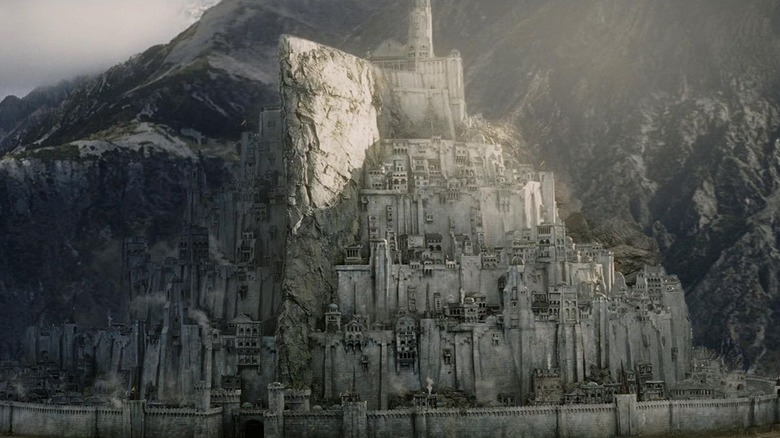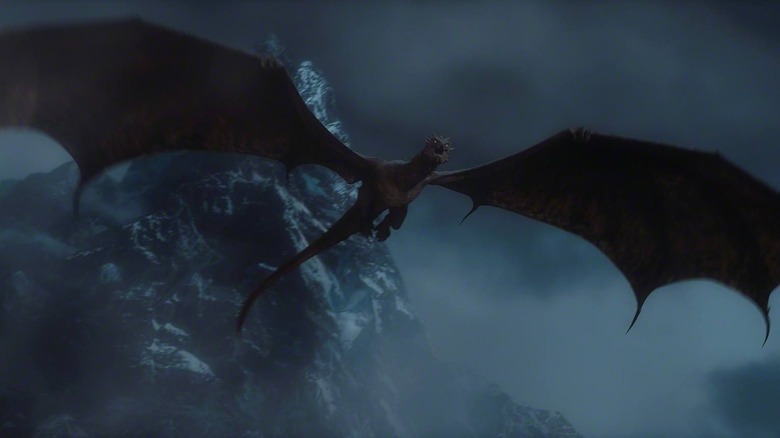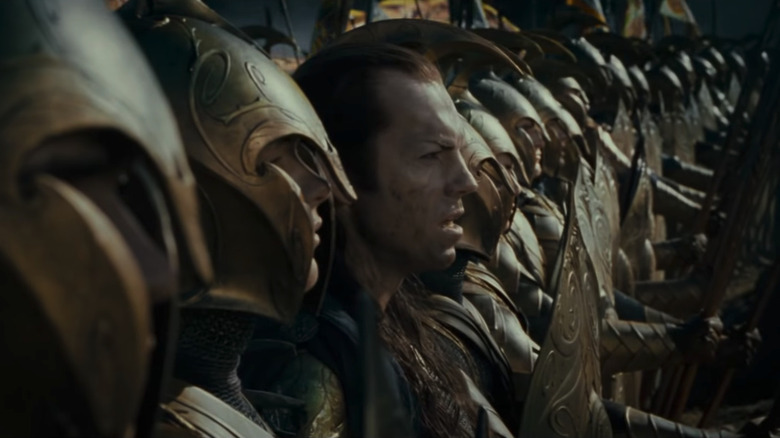Lord Of The Rings Storylines We Want To See In The Upcoming Films
In February 2023, Warner Bros. and Middle-earth Enterprises (representing Embracer Group) surprised the world with the announcement that the two organizations, which were previously reported to potentially be parting ways, will actually be reminting their Middle-earth media pact after all.
Just to clarify the rights situation (fair warning, it's complicated), Amazon Studios retains the rights to its televised "The Lord of the Rings: The Rings of Power" show and the Tolkien Estate is hanging onto the overall rights for "The Silmarillion" and other OG Tolkienian writings. This new deal focuses on the movie rights for "The Hobbit" and "The Lord of the Rings" (including the latter's beefy appendices) as well as a new slate of full-length feature films based within those Middle-earth IPs.
While these could be remakes, the enduring popularity of Peter Jackson's original trilogy makes direct replacement films a tall order. Besides, when Embracer originally purchased the rights last year, they mentioned the potential of "additional movies based on iconic characters such as Gandalf, Aragorn, Gollum, Galadriel, Eowyn and other characters from the literary works of J.R.R. Tolkien." Jackson and fellow Middle-earth alumni Fran Walsh and Philippa Boyens also released a statement to Deadline stating that they were in the loop and "look forward to speaking with [Warner Bros. and Embracer] further to hear their vision for the franchise moving forward."
With the promise of new Middle-earth movies firmly in the picture, we thought we'd go through a few of the best storylines these new films could explore.
Let's finally get a young Aragorn flick
Way back in 2018 — less than a year after Amazon Studios announced it had won the bidding war for the televised rights of "The Lord of the Rings" and "The Hobbit" materials — a rumor spread like wildfire that Amazon's production would center on a young Aragorn. That rumor, unfortunately, proved to be incorrect, as the series ended up winding its way back to the Second Age, long before Aragorn was born. However, the news of new movies reignites the possibility of a story that could follow Strider throughout the decades of adventures he experiences before he meets Frodo and his friends in Bree.
The appendices in "The Lord of the Rings: The Return of the King" briefly outline some of these adventures, mentioning a smorgasbord of events that would be perfect for a visual adaptation. These include Aragorn losing his parents, meeting Arwen for the first time and developing their romantic interests, saving Gondor from an invasion while fighting under an alias, riding with the Rohirrim, and traveling to the far reaches of Middle-earth. These are the incidents and exploits that turn the young Chieftain of the Dúnedain into the wise, battle-hardened veteran that we know and love, and we want to see them on the silver screen.
The Angmar War would be epic
Fans of "The Lord of the Rings" books are aware of the Barrow Downs and their ghoulish inhabitants (which were understandably yet unceremoniously axed from Jackson's films). Only super-fans are aware of the fact that those haunted hollows are the leftovers of a fierce and lengthy war that occurred thousands of years before the story starts.
The Angmar War takes place over the course of multiple centuries and is waged between Gondor's northern sister nation of Arnor and Angmar, a powerful northern kingdom led by none other than the Witch-king himself. During this era, Arnor splinters into multiple kingdoms and is slowly beaten into a pulp by relentless assaults from their Nazgûl neighbor. The lengthy conflict features fighting Hobbits, armed Elves from Rivendell and the Grey Havens, epic last stands, and a eucatastrophic arrival of Gondor's armed forces. The Elf Glorfindel (who was also axed from Jackson's movies) is involved in the fighting, too, and even utters the prophecy that the Witch-king won't die "by the hand of man," setting the stage for his deadly duel with Éowyn fifteen hundred years later.
The Angmar War is a juicy chapter of Middle-earth history that is ripe for an on-screen adaptation. There's a decent outline to work from in Tolkien's appendices and plenty of gaps in the information, allowing for interpretation and expanded storylines. If handled well by a creative team that respects Tolkien's works, it could be a barn burner that goes down as one of the best cinematic Middle-earth events of all time.
Tom Bombadil (and Farmer Maggot) would be a fun tale
Anyone who has read "The Lord of the Rings" for more than a few chapters is familiar with who Tom Bombadil is. Heck, even people who haven't read the books know who he is. The Middle-earth enigma has a funky-fun role in Tolkien's writings, and his absence from past adaptations is a little bit of a tragedy.
Bringing the brightly clothed and bushy-tailed character dancing and singing into an on-screen story is admittedly challenging. Along with the question of who could portray the character, Gandalf refers to Bombadil as a "moss-gatherer" whose life moves as slowly as molasses. Nevertheless, adapting the character remains a tantalizing possibility, and it's even rumored that Amazon Studios will be attempting the feat in Season 2 of "The Rings of Power."
Whether that happens or not, it doesn't rule out the sheer nonsensical fun that a Bombadil film could have as it explores Middle-earth through one of its most disconnected and overpowered characters. If a storyline is needed to spice things up, the film could delve into Bombadil's late Third Age friendship with Farmer Maggot. In "The Fellowship of the Ring" book, Bombadil describes the rustic farmer thusly, "There's earth under his old feet, and clay on his fingers; wisdom in his bones, and both his eyes are open." A story tracing the adventures of Tom Bombadil and Farmer Maggot could be a fun romp through the Shire and its surrounding areas.
The Shire epoch has plenty of options
When most folks think of the Shire, they picture a quiet, peaceful country filled with quaint, under-sized inhabitants cultivating their isolated life far from most of Middle-earth's flash point moments. However, there are actually multiple points in the Shire's history that could make for a good movie, starting with its founding.
The settling of the Shire is a climactic point in Hobbit history if only because it marks the final destination for the nomadic Halflings at the end of a vague and lengthy period of wandering (seriously, the Hobbits literally call them the "Wandering Days"). Seeing how entertaining the Harfoots' Second Age adventures have been in "The Rings of Power" may be enough to inspire a film that traces the settling of their future homeland and the events that follow.
For instance, at one point in Tolkien's tales, the Hobbits send a group of soldiers to fight the Witch-king in his nearby kingdom of Angmar. Much closer to "The Lord of the Rings" story, they also fight the Battle of Greenfields, one of two battles ever to take place in the Shire. At another point, the Ent-like trees of the nearby Old Forest also attack the rural region, and the Hobbits fight a mini-war with the arboreal intruders. At the end of "The Return of the King," the Hobbits band together, led by Merry, Pippin, Frodo, and Sam, and fight off Saruman's ruffians in the Battle of Bywater, too. Suffice it to say any of these events could make for a good flick.
The life and times of Gandalf is always intriguing
When Embracer bought the movie rights to "The Lord of the Rings" and "The Hobbit," they immediately dropped hints about wanting to make spin-offs focused on specific characters. Warner Bros.' upcoming anime film "The Lord of the Rings: The War of the Rohirrim" already feels like a film along these lines in the sense that Miranda Otto will be reprising her role as Éowyn to narrate the film.
Gandalf is another obvious candidate for a stand-alone story, whether he's narrating or the movie is actively following his life. For the former, Gandalf could be a narrative conduit for countless stories in the history of Middle-earth. The venerable old Wizard has seen a lot of things during his life, both as one of the Istari and as one of the spiritual beings called the Maiar. As far as the latter, following the life and times of Gandalf could be an exciting film. The pacing of the thousands-of-years-long story could be an issue, but it's possible.
Either way, Ian McKellen was still voicing his interest in playing Gandalf all the way up until 2017, so bringing him back to reprise the role could be a possibility. If not, recasting the character may be a bridge too far for some, but the new Middle-earth production alliance may be willing to roll the dice on a reboot that would be good enough to placate fan fears.
The War in the North connects to the existing movies well
"The Lord of the Rings" traces the most important events of the War of the Ring — but it doesn't cover everything that happened during that time. Not by a long shot. In fact, the appendices reference multiple events in the northern and western regions of the map. These are also the distant areas where much of "The Hobbit" story takes place.
In "The Return of the King," it is explained, "So it was that when the War [of the Ring] came at last the main assault was turned southwards; yet even so with his far-stretched right hand Sauron might have done great evil in the North, if King Dáin and King Brand had not stood in his path." The pair of kings rule the Lonely Mountain and Dale (the new home of the Lake-men), respectively, and they both die in the war resisting Sauron's far-flung armies. The book adds (via Gandalf) that "Yet things might have gone far otherwise and far worse. When you think of the great Battle of the Pelennor, do not forget the battles in Dale and the valour of Durin's Folk. Think of what might have been. Dragon-fire and savage swords in Eriador, night in Rivendell. There might be no Queen in Gondor."
The reference to the importance and gravity of these northern wars is enough to whet the appetite of anyone looking for more "The Lord of the Rings" action.
Wizarding adventures
Gandalf is an obvious candidate for a solo film, but he isn't the only one. There is plenty of potential to follow the wizarding adventures of all of the Istari, either individually or within the same film. Saruman has his own glorious rise to power before falling to ruin. He's the anti-hero in his own story who spends time with the Blue Wizards in the East, heads up the White Council, and eventually breaks bad and even tries to make his own Rings of Power.
Speaking of Blue Wizards, that pair of underdeveloped characters is an open-ended footnote in Tolkien's texts that could be the foundation for a killer Middle-earth film. The Blues spend all of their time in the East of Middle-earth. Earlier in his life, Tolkien made this pair of angelic beings corrupt characters who go the same way as Saruman. However, toward the end of his life, the author shifted, making notes that rehabilitate them into powerful, Gandalf-esque figures in the east of the continent. Either way, the story of a pair of wizards galavanting around the realms of the Easterlings would be awesome.
And don't forget Radagast! The Brown Wizard may be a loner who spends his time talking to birds and beasts, but he's a bonafide Wizard with his own unexplored Third-Age character arc. He's mentioned in "The Hobbit," shows up briefly in "The Lord of the Rings" books, and could play a central role in a Middle-earth movie if it's done right.
The histories of Rohan and Gondor
Both Rohan and Gondor have extensive backstories. Gondor is by far the more dramatic and Byzantine of the two. It fights wars of expansion and conquest as well as defense and protection. Centuries before the War of the Ring, Gondor is a powerhouse that sprawls across the continent and fights with Orcs, Nazgûl, and other Men, with that last group primarily consisting of Easterlings in the East and the Haradrim in the South (both of whom are present at the Battle of the Pelennor Fields). The kingdom also suffers from famine and plague as well as political drama with its northern sister kingdom of Arnor as it fights the long defeat leading up to the events of "The Lord of the Rings."
As far as Rohan is concerned, the details are lighter, but they're still there. We know that they migrate out of the northeastern portion of Middle-earth (a bit north of the area where Beorn lives in "The Hobbit") and that they have interactions with Dragons before they move southwest. Eventually, they save a Gondorian army from destruction, and as a reward, they're gifted their homeland of the Riddermark, or the "land of the riders." Once settled there, they continue to share in Gondor's wars and defend their own homeland. Part of their story will be in "The War of the Rohirrim," but there is still plenty more to glean as fodder for other movies.
A young Legolas film would be just plain fun
Most of Tolkien's writings are detailed and interwoven together. Immortal and mortal lifespans cross and intersect with incredible purpose — whether originally intended by the author or connected after the fact. One major character whose backstory remained stubbornly underdeveloped throughout Tolkien's life, though, was Legolas. We know he's the Prince of the Woodland Realm in Mirkwood, and we know he's centuries old, at least. Apart from that, we don't know much about him until he shows up at the Council of Elrond and joins the Fellowship of the Ring.
This makes the concept of a young Legolas film intriguing, if only because it's a different approach to Middle-earth story-telling than we're used to. In this case, while the character has a detailed history toward the end of his life, a young Legolas movie would have to invent most of the storyline before that point. The peril of upsetting the fandom with reckless or dumb creative decision-making is certainly a consideration here. Still, if a respected Middle-earth creator like Peter Jackson were given a shot, it would be fun to see what kind of backstory they could develop for the Elven princeling.
After all, Legolas lives through plenty of important events, and his people fight a guerilla war with Sauron in Mirkwood before the latter relocates to Mordor. It could be an entertaining adventure. The question is, would Orlando Bloom return, or would it be someone else in the role?
Could someone finish The New Shadow?
"The New Shadow" is the title of the barely-begun sequel to "The Lord of the Rings" that Tolkien started toward the end of his life. He tried to write a follow-up story to the War of the Ring but never got further than a handful of pages. These primarily consisted of a conversation between two men in a Gondor garden, but they set the stage for a dark and sinister plot that seemed set to involve cults, a Dark Tree, and the return of evil a century or more after Aragorn dies.
Why did Tolkien fail to write more of the sequel? It wasn't because he was at death's door. On the contrary, there are multiple versions of the tiny text that span the course of a decade. The issue appears to have been that Tolkien didn't see much point in writing a human-centric story without a polarizing villain like Sauron. In a letter in 1964, he said as much, stating that "I could have written a 'thriller' about the plot and its discovery and overthrow — but it would have been just that. Not worth doing."
So why make a movie out of it? Hear us out. Most Middle-earth fans struggle with accepting adaptations of their beloved world due to the lofty and elite nature of Tolkien's storytelling and writing abilities. If you want to delegate further Middle-earth storytelling to others, then why not assign them the "thriller" that Tolkien thought wasn't worth his own limited time?
Conflicts between Dwarves and Dragons
When Dwarves and Dragons are mentioned in Middle-earth (or in any conflict, really), it instantly brings to mind "The Hobbit." Still, the events of that story are just the coda to a lengthy history of conflict between these two groups. This tale is outlined in the appendices of "The Return of the King," where we get a few pages that explain how the Dwarves of Khazad-dûm stir up the Balrog and are forced to flee their subterranean kingdom.
Once kicked out, they migrate north and settle down at the Lonely Mountain, where Smaug eventually arrives and dispossesses them once again. However, if you read the appendices, it turns out that there's another stint of time in between the settling and sacking of the Lonely Mountain, where the Dwarves go even further north. There, they join others of their kin in the Grey Mountains — the extreme upper right mountain range that connects to the top of the Misty Mountains, which run down the center of the Middle-earth map.
Once ensconced up there, they start to thrive — until they run into not one but multiple Dragons. Eventually, these oversized pests kill their king and his son, and the Dwarves head south again to set up the Lonely Mountain kingdom 2.0. In fact, these are the interactions that set the stage for Smaug to eventually follow them. The story would make for some great visuals and tie into the "Hobbit" story perfectly.
A War of the Last Alliance film would throw down the gauntlet
The opening sequence of "The Fellowship of the Ring" depicts an all-out war with Sauron in which all of the Free Peoples of Middle-earth unite to take down the Dark Lord. He nearly wins, but the One Ring is cut from his hand, removing him from the equation until he returns for "The Lord of the Rings." This story is an epic, multi-year saga that could easily be its own multi-movie event. In fact, "The Rings of Power" is already working its way up to that climactic war as the ending to its own five-season story arc — which is what makes turning this idea into a movie (or series of movies) so appealing.
It would be fun to see Warner Bros. try to compete with Amazon Studios by making movie and televised versions of the same Middle-earth story simultaneously. It would create a scenario in which both studios would have to put their best foot forward to "win" over the fandom, and the raised stakes could lead to a higher quality of storytelling to determine which studio truly rules them all.
